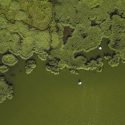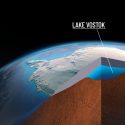Today on What If, we’re going to build the highest bridge on planet Earth. Welcome to the Qinghai-Tibet Plateau, the “Roof of the World.”It’s home to the world’s tallest mountain, Mount Everest. But also the longest, deepest canyon on the planet, the Yarlung Zangbo Grand Canyon.
This super canyon is 505 km (313 mi) long and 6 km (3.7 mi) deep. And it’s here that we’ll be taking on one of the most epic engineering challenges ever. Building a bridge so high that it could take your breath away. Literally. For inspiration, let’s look at how our project would compare to the world’s current tallest bridge, China’s Beipanjiang bridge.
This huge, concrete cable-stayed structure carries people 1,341 m (4,400 ft) across the Beipan River. But even at a dizzying height of 565 m (1,854 ft) above the river, it would find itself in a very distant second place. Our bridge would be over 10 times higher. So let’s get started.
Standing face-to-face with the deepest canyon in the world, you’d be so high above the rivers below you that you could stack seven of the world’s tallest skyscraper, the Burj Khalifa, on top of each other. Or the entirety of Mt. Kilimanjaro. But the air you’d be breathing would have less than half of the oxygen available at sea level.
While working on this gravity-defying bridge, you could suffer from high-altitude illness. This would make breathing difficult, cause headaches and make you feel light-headed. You and your crew should carry oxygen to be safe. If you got dizzy and fell, you’d drop straight through several different ecosystems.
From snowy mountain peaks to temperate coniferous forests to sub-tropical rainforests. All in 35 seconds. Adding to your already full plate of design challenges, you’d be surrounded by tall, dangerous mountain peaks. And your job would be to connect two of these mountains, Namcha Barwa and Gyala. They stand a staggering 22 km (13 mi) apart.
This would mean that not only would our bridge be 10 times higher than the Beipanjiang, it would also be about 16 times longer. But just like that one, cable-stayed suspension would be the best design option. All you’d need would be massive cables made of tightly-braided steel wires. They’d rest on top of towers anchored to either side of the bridge.
A suspension bridge like this would also be the best way to go because it would be better at withstanding earthquakes. And the Tibetan Plateau is a region that is highly prone to earthquakes. But that wouldn’t be the only force of nature you’d have to concern yourself with. You’d also face severe weather. Your crew would need to deal with fog, rain and freezing temperatures.
And then there’s the wind. Your design would require the bridge to be as light and as flexible as possible. But you’d need to make sure it remains stable, even in the most extreme winds. One solution would be to build pendulum-like devices onto each tower to balance any swaying.
Or you could construct a stabilizer fin beneath the center of the roadway that would keep movement to a minimum. But enough about the ways weather could affect our bridge. What about the ways our bridge could affect the weather? All of this uber-engineering would be underway in a region that is a diverse habitat for many plants and animals.
One of the factors in this is the steep V-shape of the canyon. It helps funnel warm, moist air north from the Indian Ocean up to the plateau. Our bridge would need an entire infrastructure to meet construction demands. Your crew would start by building roads that climb up the mountains. And then, working from both sides at the same time like during the construction of California’s Golden Gate Bridge, you’d bring them together in the center.
All this could definitely impact the very important flow of air in the region. And you’d need to make sure that the construction process doesn’t destroy the habitats of wildlife like the Bangladesh tiger, the bear monkey or the giant boa constrictor. Would it be worth it? And is there any way to calculate the final price tag for a project so huge and with so many challenges?
Well, given that this is 16 times bigger than the Beipanjiang, it could cost upward of $2 billion, at the very least. And that would be pretty cheap compared to an even more daring feat of engineering, a highway in space.
Sources
- “Duge Bridge – Super Engineering Website”. 2022. reduper.com.
- “Seismic Activities and Earthquake Potential in the Tibetan Plateau”. Deng Qi-dong, Cheng Shao-ping, Ma Ji, Du Peng. 2014. DOI:10.1002/cjg2.20133. researchgate.net.
- “Cable Supported Bridges Earthquakes Performance And Vulnerabilities”. Madeh Izat Hamakareem. 2017. theconstructor.org.
- “NOVA Online | Super Bridge | Suspension Bridges”. 2000. pbs.org.
- “Could The Yarlung Tsangpo Canyon Be China’S Next Big National Park?”. Shi Yi. 2021. chinadialogue.net.



























